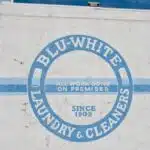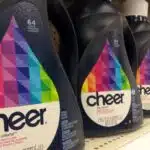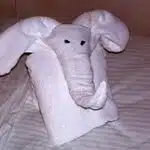As a laundry care expert, I have seen countless white clothes and linens that have lost their pristine appearance due to everyday wear and tear. While it may seem like a daunting task to restore these items back to their original brightness, there are several proven methods for whitening white clothes and linens without causing damage or discoloration.
Using the right cleaning products, techniques, and strategies can make all the difference in effectively removing stains and yellowing from white fabrics. In this article, we will explore various methods for whitening white clothes and linens, including natural remedies and commercial products, as well as tips for preventing future discoloration. By following these steps, you can ensure that your white garments always look crisp and clean, providing a fresh and inviting appearance for yourself and those around you.
Understanding The Causes Of Yellowing And Staining
Yellowing and staining of white clothes and linens are common issues faced by many households. The causes of yellowing can be attributed to the accumulation of dirt, sweat, body oils, and other substances that cling onto the fibers over time. Additionally, exposure to sunlight, improper storage, and using harsh detergents or fabric softeners can lead to discoloration. Furthermore, aging fabrics tend to turn yellow as a result of oxidation or exposure to air.
To prevent yellowing from occurring in the first place, it is essential to handle your white clothes with care from the moment they are purchased. Avoid using bleach on every wash cycle as it can weaken the fibers in the long run. Instead, opt for a gentle detergent that is specially formulated for whites. Also, avoid using fabric softeners or dryer sheets as they leave behind a residue that can cause yellowing.
When dealing with aging fabrics that have already turned yellow, it is essential to take extra precautions when washing them. Avoid hot water as it can cause further damage and break down weakened fibers even more. Instead, use cool water with a gentle detergent and soak them overnight before washing for optimal results. By taking these measures into consideration when handling your white clothes and linens, you can effectively prevent yellowing from happening and extend their lifespan.
Now that we understand the causes of yellowing and staining let’s move on to sorting your laundry for optimal whitening.
Sorting Your Laundry For Optimal Whitening
As we have discussed in the previous section, yellowing and staining are common problems that affect white clothes and linens over time. To tackle these issues, it is essential to sort your laundry properly before washing. Proper laundry organization based on fabric coloration is crucial for optimal whitening results.
When sorting your laundry, start by separating whites from colors. This will prevent any dye transfer that could cause discoloration or staining. Additionally, sort whites into separate piles based on the level of soiling. Clothes with heavy stains should be washed separately from lightly soiled ones to avoid cross-contamination and ensure that all items receive the appropriate level of cleaning.
To further optimize your laundry organization, consider pre-treating any stains before washing. This step can significantly improve whitening results by removing stubborn spots that might not come out in the wash alone. There are many commercially available stain removers on the market, but you can also make your own using simple household ingredients like baking soda and vinegar. By taking these extra steps in laundry care, you can achieve brighter, whiter clothes and linens every time.
Moving forward, let’s explore pre-treating stains for best results when whitening white clothes and linens.
Pre-Treating Stains For Best Results
When it comes to whitening white clothes and linens, pre-treating stains is crucial for achieving the best results. There are different types of stains that can be found on fabrics, such as food, oil-based, and protein-based stains. Effective pre-treating methods depend on the nature of the stain and the fabric.
For food stains, it’s recommended to use a liquid enzyme detergent or a mixture of water and vinegar. The enzymes in the detergent break down the proteins in the stain while vinegar helps to remove any residual odor. For oil-based stains, applying a small amount of dishwashing soap directly onto the stain can help dissolve and lift the oils from the fabric. To treat protein-based stains like blood or sweat, using cold water is key as hot water can set these types of stains permanently into fabric fibers.
In addition to these pre-treating methods, there are some general tips that can help improve stain removal success rates. Firstly, always treat stains as soon as possible after they occur to prevent them from setting into fabric fibers. Secondly, avoid using hot water on fabrics that are prone to shrinking or fading colors. Lastly, test any new pre-treating method on a small inconspicuous area before applying it to a larger stain to ensure it won’t cause damage or discoloration.
Transitioning into our next section about using hot water for extra cleaning power, it’s important to note that while hot water can be effective at removing certain types of stains and killing bacteria, it’s not suitable for all fabrics or colors. In our next section, we’ll explore how to safely incorporate hot water into your laundry routine for optimal cleaning results.
Using Hot Water For Extra Cleaning Power
After pre-treating stains, the next step in achieving bright white clothes and linens is using hot water for extra cleaning power. Hot water can break down dirt and grime more effectively than cold water. However, it’s essential to note that this method may not be energy-efficient as it consumes more electricity or gas to heat up the water. Therefore, consider using hot water only when necessary.
Before using hot water, make sure to read care labels on your clothes and linen. Some fabrics are delicate and can shrink or fade when subjected to high temperatures. Additionally, always take safety precautions when handling hot water. Use oven mitts or thick gloves when handling hot laundry items and avoid splashing hot water on your skin. If you have children at home, ensure they are not around the laundry area when handling hot water.
Using hot water can help remove stubborn stains that refuse to go away with regular washing methods. However, suppose you’re dealing with tough-to-remove stains such as blood or sweat stains. In that case, adding bleach to your laundry routine might help achieve better results without damaging your clothes and linens’ fabric quality.
Transitioning into the subsequent section topic about adding bleach to your laundry routine, we’ll explore how this method works best for achieving bright white clothes while taking necessary precautions when handling bleach products.
Adding Bleach To Your Laundry Routine
Bleach is a powerful whitening agent that can help you achieve whiter clothes and linens. However, it is important to use the right type of bleach and follow safety precautions when using it. There are two main types of bleach: chlorine bleach and oxygen bleach.
Chlorine bleach is a strong bleaching agent that can remove tough stains and whiten fabrics. It works by breaking down the chemical bonds in dyes and pigments, making them easier to remove. However, chlorine bleach can damage some fabrics, so it’s important to check the care label before using it. Additionally, chlorine bleach should never be mixed with other cleaning products as this can create dangerous fumes.
Oxygen bleach is a gentler alternative to chlorine bleach that uses hydrogen peroxide or sodium percarbonate to whiten fabrics. It is safe for most fabrics and colors, but may not be as effective at removing tough stains. When using any type of bleach, it’s important to follow safety precautions such as wearing gloves and protective clothing, avoiding contact with eyes and skin, and keeping the area well-ventilated. By incorporating these safety measures into your laundry routine, you can effectively use bleach to achieve brighter whites without damaging your clothes.
As an alternative to using traditional bleaching agents like chlorine or oxygen bleaches, there are natural remedies that you might want to try such as lemon juice or baking soda. These options are safer for both your clothes and the environment while still providing effective solutions for whitening your laundry. In the next section we will explore how these natural remedies work and how they can be incorporated into your laundry routine for optimal results without compromising on quality or effectiveness.
Trying Natural Remedies Like Lemon Juice And Baking Soda
Adding bleach to your laundry routine can be an effective way to whiten your white clothes and linens. However, some people may be hesitant to use bleach due to the potential harm it can cause to the environment and their health. If you are looking for DIY alternatives, natural remedies like lemon juice and baking soda may be worth considering.
One of the pros of using natural remedies is that they are generally safer for both you and the environment. Lemon juice, for example, contains citric acid which can help break down tough stains and brighten whites without causing harm. Baking soda, on the other hand, has natural whitening properties that can help remove yellowing from fabrics. Additionally, these ingredients are often readily available in most households.
However, there are also cons to using natural remedies. While they may be gentler on your clothes than bleach, they may not be as effective at removing tough stains or achieving a bright white color. It’s important to also note that some natural remedies like lemon juice can actually cause discoloration if not used properly. Before trying any DIY alternatives, it’s always best to do a spot test on a small area of fabric first.
Using vinegar for fabric softening and whitening is another popular DIY alternative that many people swear by. But how exactly does vinegar work? Stay tuned for our next section where we’ll explore this method in more detail and discuss its effectiveness in achieving brighter whites and softer fabrics.
Using Vinegar For Fabric Softening And Whitening
Vinegar is a natural ingredient that can be used to soften fabrics and whiten white clothes and linens. It is an effective alternative to commercial fabric softeners, which can contain harmful chemicals that may irritate the skin. When used correctly, vinegar can provide the same benefits as fabric softeners without any negative side effects.
To use vinegar for fabric softening and whitening, add one cup of white vinegar to the rinse cycle of your washing machine. This will help to break down any leftover detergent residue and remove any mineral buildup from hard water. Additionally, it will help to soften fabrics and brighten whites by removing any yellowing caused by age or sweat stains.
While vinegar is generally safe to use in laundry care, there are some precautions that should be taken when handling it. First, never mix vinegar with bleach or other cleaning products as this can create toxic fumes. Additionally, do not use vinegar on delicate fabrics such as silk or wool as it may damage the fibers. Always dilute vinegar with water before using it on fabrics and avoid using too much as it may leave a strong odor on clothes.
Now that you have learned about the benefits of using vinegar for fabric softening and whitening, the next step is selecting the right laundry detergent for your needs. By choosing a detergent that suits your specific requirements such as fragrance-free options for sensitive skin or high-efficiency detergents for energy-efficient machines, you can ensure that your clothes are cleaned effectively while maintaining their quality over time.
Selecting The Right Laundry Detergent For Your Needs
- When selecting a laundry detergent, one must consider the types of detergent available, such as powder, liquid, or tablets, each of which may be more suitable for certain fabrics or laundry loads.
- Cost and budget should be taken into account when selecting a detergent, as the more expensive versions may not necessarily provide the best cleaning power.
- Furthermore, the cleaning power of the detergent should be considered, as the laundry detergent must be able to remove dirt and stains from the clothes or linens being washed.
- For whites, a laundry detergent with brightening agents can help keep whites looking their best.
- Additionally, for heavier stains, a laundry detergent with enzymes may be necessary for more effective cleaning.
- Lastly, for delicate fabrics, a low-sudsing detergent may be more suitable to protect delicate fabrics from damage.
Types Of Laundry Detergent
High efficiency detergents have become very popular in recent years due to their ability to clean clothes effectively while using less water and energy. These detergents are specifically designed for use in high efficiency washing machines and can help to reduce your carbon footprint. They come in both liquid and powder form, and many brands offer scented options as well. High efficiency detergents also tend to be more expensive than regular detergents, but the cost is often offset by the savings on energy and water bills.
Specialty detergents are another option for those with specific laundry needs. These types of detergents are formulated for certain fabrics or stains, such as baby clothes or pet messes. Specialty detergents can be particularly helpful for those with allergies or sensitive skin, as they are often free of harsh chemicals and fragrances. There are also specialty detergents available for dark clothing, which can help to prevent fading over time.
When selecting a laundry detergent, it’s important to consider your specific needs and preferences. High efficiency detergents may be a good choice if you’re looking to reduce your environmental impact, while specialty detergents can help address specific concerns like allergies or pet stains. Ultimately, finding the right laundry detergent comes down to trial and error – you may need to try a few different brands before finding one that works best for you.
Cost And Budget
When selecting a laundry detergent, one of the most important factors to consider is cost and budget. While high efficiency and specialty detergents can offer specific benefits, they often come with a higher price tag compared to regular detergents. However, there are budget friendly options available that can still provide effective cleaning power.
One option for those looking to save money on laundry detergent is to make their own using DIY techniques. Homemade laundry detergent can be made using simple ingredients like borax, washing soda, and grated soap. This can be an affordable alternative to store-bought detergents, especially for those who prefer natural or eco-friendly options.
Another cost-saving option is to purchase larger sizes or bulk packages of laundry detergent. This can often result in a lower per-load cost compared to buying smaller containers. Additionally, some brands may offer coupons or discounts for purchasing in bulk or subscribing for regular deliveries. By considering these budget-friendly options, you can find a laundry detergent that meets your needs without breaking the bank.
Cleaning Power
When it comes to selecting the right laundry detergent, cleaning power is one of the key factors to consider. The primary goal of any laundry detergent is to effectively remove dirt, stains, and odors from clothing and other fabrics. Therefore, it’s important to choose a detergent that can provide the necessary cleaning power for your specific needs.
One important factor in determining a laundry detergent’s cleaning power is its formulation. High-efficiency detergents are designed specifically for use in efficient washing machines and often contain enzymes and other powerful ingredients that can penetrate deep into fabric fibers to remove tough stains. However, these detergents may not be suitable for all types of fabrics or washing machines.
Another factor to consider when evaluating a detergent’s cleaning power is its ability to remove specific types of stains. Some detergents may be better suited for removing grass stains or grease stains, while others may excel at removing blood or wine stains. It’s important to choose a detergent that is effective at removing the types of stains you commonly encounter in your laundry.
In summary, when selecting a laundry detergent, it’s essential to consider its cleaning power and ability to remove tough stains. By choosing a detergent with the right formulation and stain-fighting capabilities, you can ensure that your clothes come out looking clean and fresh after every wash cycle.
Choosing A Laundry Booster For Tough Stains
As we discussed in the previous section, selecting the right laundry detergent is crucial for getting your clothes clean. However, sometimes even the best detergents cannot remove tough stains or restore white clothes to their original brightness. This is where laundry boosters come in handy.
Laundry booster alternatives are a great way to enhance the cleaning power of your detergent and brighten your whites without using harsh chemicals. One eco-friendly option is adding baking soda to your wash cycle. Baking soda can help neutralize odors and remove stains while also acting as a natural whitener. Another alternative is using white vinegar as a fabric softener and brightener. Simply add half a cup of white vinegar to your rinse cycle instead of fabric softener, and you’ll see brighter, cleaner clothes.
It’s important to note that many commercial fabric softeners and dryer sheets can actually harm your clothes by leaving behind a coating that reduces absorbency and causes towels to be less effective at drying off. In the next section, we’ll discuss why it’s important to avoid these products and how you can still achieve soft, static-free laundry without them.
Avoiding Fabric Softeners And Dryer Sheets
- Fabric softeners come in both liquid and sheet form and are designed to add a pleasant scent, reduce static cling and make fabrics feel soft.
- Benefits of avoiding fabric softeners include reducing the use of chemicals and fragrances, saving money, and preserving the fabrics’ natural feel.
- Alternatives to fabric softeners include white vinegar and baking soda, both of which are natural whiteners and can be used to soften clothes.
- Vinegar works by removing soap residue and softening fabrics, while baking soda works by neutralizing acid and adding a slight scent.
- To whiten whites, a solution of hydrogen peroxide can be used. It is important to note that chlorine bleach should not be used on colored fabrics.
- Finally, air drying clothes and linens instead of using a dryer can help to maintain the natural softness of fabrics.
Types Of Fabric Softeners
Are you tired of stiff and scratchy clothes after washing? Fabric softeners are commonly used to make clothes and linens feel softer, smell fresher, and reduce static cling. However, they also have their drawbacks. Some fabric softeners contain chemicals that can irritate the skin or cause allergic reactions. They can also damage certain fabrics such as towels by reducing their absorbency over time.
Thankfully, there are eco-friendly fabric softener options available that offer the same benefits without the harmful chemicals or negative impact on your clothes. Plant-based fabric softeners made from natural ingredients like essential oils or vinegar provide a safer alternative for people with sensitive skin or allergies. These eco-friendly options not only soften clothes but can also eliminate odors and reduce wrinkles in a more sustainable way.
In summary, while traditional fabric softeners may offer benefits such as softer clothes and reduced static cling, they come with potential drawbacks like skin irritation and damage to certain fabrics. For those looking for a safer and more sustainable option, eco-friendly fabric softeners made from natural ingredients such as essential oils or vinegar offer a greener alternative that still provides the desired benefits of softened clothing without negative effects on your health or the environment.
Benefits Of Avoiding Fabric Softeners
Fabric softeners have long been a popular choice for people who want to achieve softer, fresher-smelling clothes. However, these products can come with some potential drawbacks, such as skin irritation or damage to certain fabrics. For those looking for a safer and more sustainable option, natural fabric softener alternatives are becoming increasingly popular.
One of the key benefits of avoiding fabric softeners is that it can help reduce exposure to potentially harmful chemicals. Many traditional fabric softeners contain ingredients like quaternary ammonium compounds (quats) or synthetic fragrances that can irritate the skin or cause allergic reactions. By using natural fabric softener alternatives instead, people can enjoy the same benefits of softened clothing without exposing themselves or their families to these potentially harmful chemicals.
In addition to reducing exposure to chemicals, there are other benefits to using natural fabric softener alternatives as well. For example, many of these products are made from renewable resources and are biodegradable, which makes them much more environmentally friendly than traditional fabric softeners. They can also be gentler on clothing and linens over time, helping them last longer and reducing the need for frequent replacement. Overall, there are many compelling reasons why people might choose to avoid traditional fabric softeners in favor of more eco-friendly options.
Alternatives To Fabric Softeners
As a laundry care expert, it is important to consider the potential drawbacks of using traditional fabric softeners and dryer sheets. Luckily, there are many DIY alternatives and eco-friendly options available for those looking to avoid these products.
One alternative to traditional fabric softeners is adding vinegar or baking soda to the wash cycle. Both of these products can help soften fabrics without the use of harsh chemicals. Another option is using wool dryer balls, which can reduce drying time and static cling while also softening clothes.
For those who prefer ready-made products, there are many eco-friendly fabric softener options available on the market today. These products often use natural ingredients like plant-based oils or essential oils instead of synthetic fragrances or quats. By choosing these alternatives, people can enjoy softer clothes without exposing themselves or the environment to potentially harmful chemicals.
Drying Your Whites In The Sun For Extra Brightness
After washing your white clothes and linens, drying them under the sun can be a great way to add extra brightness to them. The benefits of air-drying are numerous, and it is especially true for white fabrics that can become dull with time. Furthermore, sunlight has natural bleaching properties that can help remove any remaining stains on the clothes.
Tips for preventing shrinkage should be kept in mind when drying whites under the sun. It is best to stretch out the clothes before hanging them up as this will prevent them from shrinking while they dry. Additionally, avoid hanging heavy items like towels on thin lines as this can lead to stretching and misshaping of the clothes.
Drying your whites under the sun not only gives them a brighter appearance but it also saves energy by reducing the use of machines. Additionally, it helps keep your whites looking new for longer periods of time. Follow these simple tips when drying your whites, and you’ll be amazed at how bright and fresh they look.
To achieve a crisp finish on your white clothes and linens, steaming and ironing are essential steps. By using steam or an iron, you can remove any wrinkles or creases on the fabric, giving it a smooth finish. In the next section, we’ll discuss some tips on how to steam and iron your whites for optimal results.
Steaming And Ironing Your Whites For A Crisp Finish
- Steaming is an effective way to whiten and sanitize white clothes and linens, as it uses hot air to penetrate the fabric and reduce wrinkles.
- Ironing is another way to whiten whites, although users should be mindful of the heat setting and fabric type to avoid scorching or damaging the garment.
- Stain removal should be done before ironing, and pre-treating with a suitable laundry detergent is recommended.
- When steaming or washing whites, use cold or warm water to prevent the colors from bleeding and to ensure the best results.
- Bleach should be used cautiously when whitening whites, and fabric softener should be avoided for delicate fabrics.
- To ensure a crisp finish, use a press cloth when ironing and be mindful of the iron cleaning, ironing board, and wrinkle prevention.
Steaming
There’s nothing quite like the feeling of slipping into crisp, fresh white clothes or linens. But keeping them looking bright and clean can be a challenge. Luckily, there are several methods available to help you achieve that desired whitening effect. One technique that has gained popularity in recent years is steaming.
Steaming offers various benefits when it comes to whitening your whites. Unlike ironing, which can sometimes flatten fabrics and leave unwanted creases, steaming gently removes wrinkles and refreshes fibers without causing damage. Additionally, steaming is ideal for delicate materials such as lace or silk that may not withstand the heat of an iron. The steam penetrates deep into the fabric fibers, effectively removing dirt and stains that may have become embedded over time.
While both methods have their advantages, when it comes to achieving a crisp white finish on your clothes and linens, steaming has some distinct advantages over ironing. Not only does steaming remove wrinkles more effectively than ironing, but it also improves the overall appearance of your garments by leaving them looking fuller and more voluminous. Plus, since you don’t need an ironing board to steam your clothes, it’s a much more convenient option for those who are short on space or time.
In conclusion, if you’re looking for a quick and effective way to whiten your whites while also preserving the integrity of your fabrics, consider incorporating steaming into your laundry routine. With its gentle yet powerful cleaning abilities and convenience factor, it’s no wonder why this technique has become increasingly popular in recent years amongst laundry care experts and enthusiasts alike.
Ironing
When it comes to achieving a crisp finish on your whites, steaming is not the only option available. Ironing, which has been a classic laundry care technique for centuries, can also help you achieve that desired pristine look. However, ironing can be time-consuming and challenging, especially for those who are new to the process. Nonetheless, with the right tips and techniques, you can efficiently iron your clothes and linens without causing any damage.
To ensure efficient ironing of your whites, start by selecting the right temperature setting on your iron. Most irons come equipped with temperature controls that allow you to adjust the heat based on the fabric type. For cotton or linen fabrics, set your iron to high heat; for silk or rayon materials, use a lower heat setting. Additionally, make sure that your clothing or linens are damp before ironing them as this will make it easier to remove wrinkles.
While ironing may seem straightforward, it’s essential to avoid common mistakes that can cause damage to your fabrics. One common error is using too much pressure on the iron while pressing down on fabrics. This can lead to flattening or stretching of fibers and leave unwanted creases in certain areas of the garment. Another mistake is leaving the hot iron in one spot for too long. This can scorch or burn delicate fabrics such as silk or lace.
In conclusion, both steaming and ironing are effective ways to achieve a crisp finish on your whites. While steaming is more gentle and convenient than ironing, mastering efficient ironing techniques can save time and help preserve the integrity of your fabrics in the long run. By following these tips for efficient ironing and avoiding common mistakes while pressing down on fabrics with an appropriate amount of pressure over time will lead you towards serving others’ laundry care needs better than ever before!
Heat Settings
When it comes to achieving a crisp finish on your whites, heat settings play a crucial role in the steaming and ironing process. For steaming, it is essential to adjust the heat setting according to the fabric type. Delicate fabrics like silk or rayon require lower heat settings, while cotton or linen fabrics can withstand high temperatures. Choosing the right temperature setting will ensure that your clothes and linens are wrinkle-free without causing any damage.
Similarly, when ironing your whites, selecting the appropriate heat setting is crucial for efficient ironing. It prevents scorching or burning of delicate fabrics and also saves time by eliminating the need for constant readjustment of temperature. Matching your chosen detergent brand with the right temperature setting can also help maintain the quality and appearance of your whites.
In conclusion, adjusting heat settings is an essential aspect of steaming and ironing your whites for a crisp finish. Whether you choose to steam or iron, choosing the appropriate temperature setting for each fabric type will help preserve their quality while ensuring a neat and tidy appearance. By incorporating this simple yet effective technique into your laundry care routine, you can serve others’ needs better by providing them with well-maintained clothing and linens.
Storing Your Whites Properly To Prevent Yellowing
Proper storage is crucial in preventing yellowing of white clothes and linens. Always ensure that your whites are completely dry before storing them away. Dampness can lead to mold growth, which causes discoloration. Avoid storing whites in plastic bags or containers as they trap moisture and do not allow air circulation. Instead, opt for cotton or linen bags to store your whites.
When it comes to cleaning techniques, natural remedies can be a great alternative to harsh chemicals found in some detergents. Baking soda and vinegar are excellent natural whitening agents that can be added to your laundry cycle. Fabric softening agents should be used sparingly as they can leave a residue on the fabric, leading to yellowing over time.
Using whitening detergents and treating tough stains promptly can also help prevent yellowing of your whites. Sun drying is an effective method for removing stubborn stains and maintaining the crisp finish of white clothes and linens. However, excessive exposure to sunlight can cause yellowing over time.
Proper storage, appropriate cleaning techniques, natural remedies, fabric softening, whitening detergents, tough stain removal, sun drying, and maintaining a crisp finish are all essential components of long-term maintenance for white clothes and linens. By following these guidelines, you can ensure that your whites remain bright and vibrant for years to come. In the subsequent section about maintaining your white clothes and linens for long-term whiteness we will explore additional tips on how to keep your whites looking their best.
Maintaining Your White Clothes And Linens For Long-Term Whiteness
Although it is relatively easy to whiten white clothes and linens, maintaining their whiteness for a long time can be quite challenging. One popular theory that people often hear is that washing white clothes and linens with bleach will keep them white forever. However, this theory is not entirely accurate. While bleach can indeed remove stains and brighten fabrics, overusing it can lead to yellowing or weakening of the fibers, making the fabric more prone to tearing and damage.
Understanding fabric types is crucial when it comes to maintaining your white clothes and linens’ whiteness for a long time. Different fabrics require different care methods, so you must know how to take care of each one correctly. For example, cotton fabrics are durable and can withstand hot temperatures while synthetic fabrics like polyester are sensitive to high heat and may require a gentler cleaning process.
Effective home remedies are also available for keeping your white clothes and linens pristine for an extended period. Here are five items that you can use for effective home remedies:
- White vinegar: Add half a cup of white vinegar to your laundry detergent during the rinse cycle.
- Baking soda: Add half a cup of baking soda along with your detergent during the wash cycle.
- Lemon juice: Mix half a cup of lemon juice with one gallon of water, soak your whites in this solution overnight before washing them as usual.
- Hydrogen peroxide: Mix half a cup of hydrogen peroxide with one gallon of water, soak your whites in this solution overnight before washing them as usual.
- Borax: Add half a cup of borax along with your detergent during the wash cycle.
Understanding fabric types and using effective home remedies can go a long way in maintaining the whiteness of your white clothes and linens. In the next section, we will discuss common whitening problems that people encounter when trying to keep their whites clean and offer solutions on how to troubleshoot them.
Troubleshooting Common Whitening Problems And Solutions
Maintaining the whiteness of your clothes and linens can be quite challenging. Despite your best efforts, you may still encounter some common whitening problems that can be frustrating to deal with. Fortunately, there are several alternative methods for whitening white clothes and linens that you can try, as well as some common mistakes that you should avoid.
One of the most common mistakes in whitening is using too much bleach. While bleach is a powerful whitener, it can also damage fabric fibers if used excessively. To avoid this problem, always follow the manufacturer’s instructions for dilution and usage. Additionally, you should never mix bleach with other cleaning products as this can result in toxic fumes.
Another mistake to avoid is using hot water on stains or yellowing areas. While hot water may seem like a logical solution for getting rid of tough stains or discolorations, it can actually set them in further. Instead, use cold water to rinse the affected area before applying a stain remover or soaking in a whitening solution.
If you’re looking for alternative methods for whitening white clothes and linens, consider using lemon juice or baking soda. Lemon juice contains natural bleaching agents that can help remove stains and brighten whites. Simply add 1/2 cup of lemon juice to your laundry load during the wash cycle. Baking soda is another effective alternative as it helps neutralize odors and remove stains while also brightening whites. Add 1/2 cup of baking soda to your laundry load along with your regular detergent for best results.
By avoiding common mistakes in whitening and trying out these alternative methods, you’ll be able to maintain the long-term whiteness of your clothes and linens effortlessly!
Conclusion
As a laundry care expert, it is important to understand the causes of yellowing and staining on white clothes and linens in order to effectively whiten them. Sorting your laundry and pre-treating stains are crucial steps before adding bleach or using hot water for extra cleaning power. Steaming and ironing your whites can provide a crisp finish, but proper storage is also key to preventing yellowing.
To maintain long-term whiteness, it is important to consistently follow these steps and troubleshoot any whitening problems that may arise. Remember, white clothes and linens not only represent cleanliness but also evoke a sense of purity and freshness. Don’t let yellowing or staining take away from this symbolic imagery. Take pride in your whites by giving them the care they deserve. With these tips, you can restore the brilliance of your whites and feel confident in their clean appearance.
Image Credits
- “Apple iPad linen background pattern” by Matt Hamm (featured)

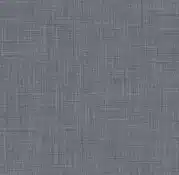





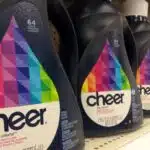
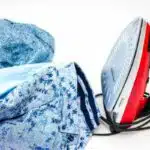



![How To Wash And Care For White Clothes 12 The only genuine borax soap cleanses hygienically saves the clothes and hands. 20 Mule-Team brand Boraxo white laundry soap [front]](https://green-life.blog/wp-content/uploads/2023/05/YDXLLCovnOjq-150x150.jpg.webp)
